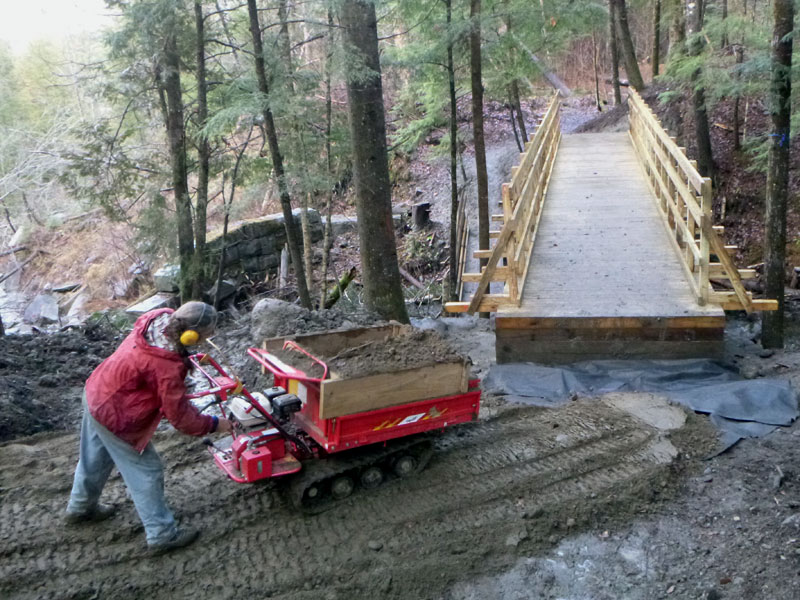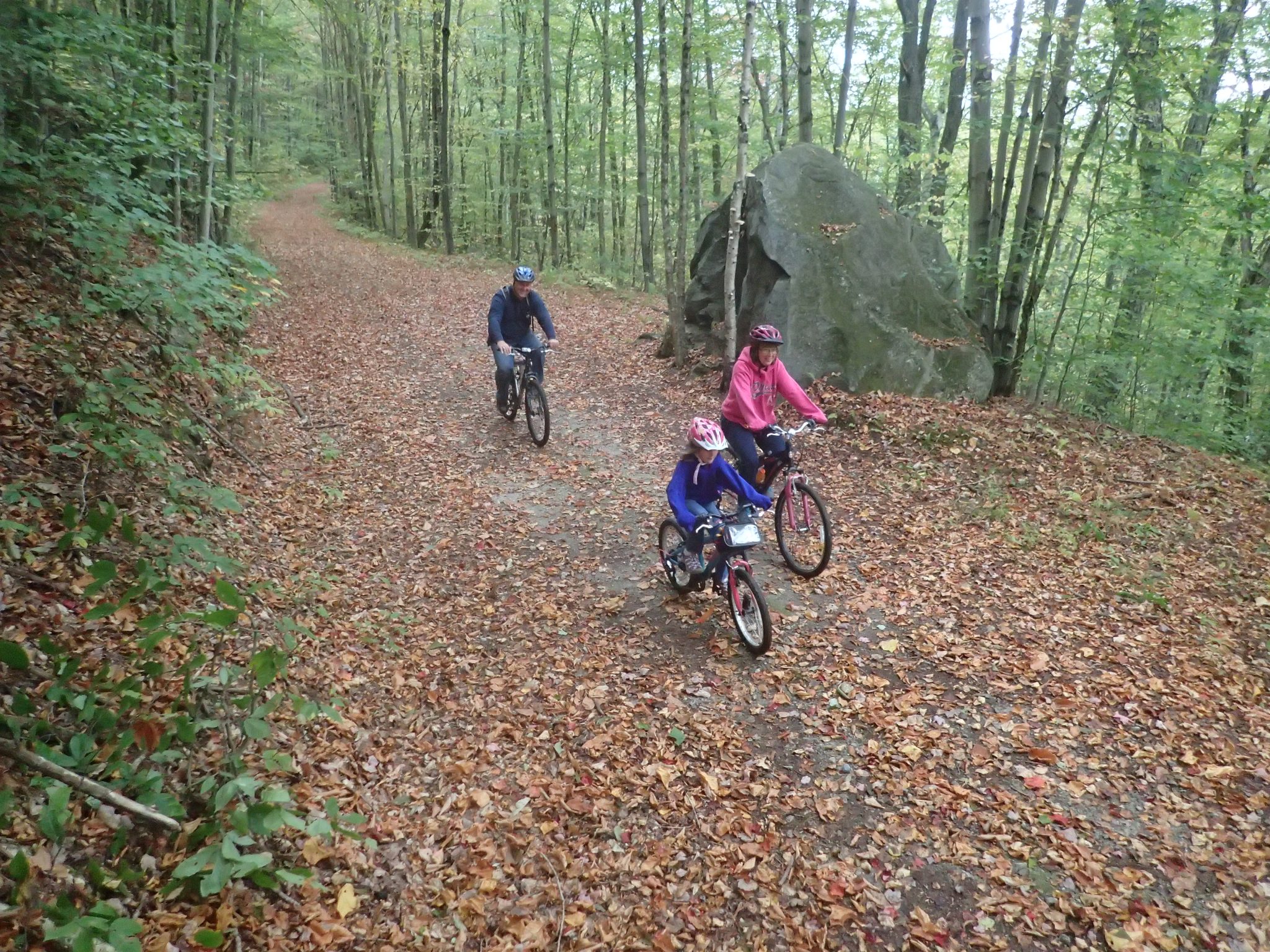The Vermont Natural Resources Council (VNRC) awarded a Small Grant for Smart Growth to the Cross Vermont Trail Association (CVTA) to further its goal of connecting villages, schools, and conserved natural areas in Central Vermont.
CVTA is working to build out a network of trails that serve the upper Winooski Valley, from Montpelier to the Groton State Forest, winding through East Montpelier, Plainfield and Marshfield, providing a way for pedestrians and cyclists to conveniently access the outdoors. The basis of the Cross Vermont Trail lies in an old railbed formerly used by the Montpelier & Wells River Railroad, which for many decades was used as an informal public trail.
“The villages of East Montpelier, Plainfield and Marshfield lie between two attractive destinations: The Barre/Montpelier area, with its shopping and services, and the Groton State Forest, with its opportunities for outdoor recreation. But currently, the only direct transportation route between these places is busy, high-speed Route 2, which is dangerous for pedestrians and cyclists,” said Greg Western, Executive Director of CVTA.
Western explained that the old Montpelier & Wells River railbed already connects villages to schools and public parks. It could provide a safe, accessible, off-road alternative to Route 2 and unsafe local roads, as well as convenient access to outdoor exercise and recreation opportunities for residents in nearby communities.
Today, ownership of the railway is fractured and in places unclear. With its $3,000 grant from VNRC, CVTA will conduct outreach to approximately 40 landowners, primarily along the railroad right-of-way, to learn their feelings about past use of the railbed, and their thoughts on the best future for the area.
“Our goal is to establish an ongoing relationship and conversation with the landowners. We will share how CVTA could work with them both individually, as a reliable partner if they want to allow public access on their land, and also communally, by helping numerous neighboring landowners work together without placing undue logistical burden on any one,” said Western.

CVTA will also use grant funds to engage in a visioning process with the general public in nearby communities to help understand how its work can best serve the diverse needs of residents. This may take the form of meetings in Plainfield and Marshfield, or depending on COVID-19 restrictions, other forms of outreach, such as public surveys.
“Members of these communities may not be generally aware of the history and current status of the old railbed. We plan to inform the public of this history, and to ask what community members now see as valuable to preserve or create for the future,” added Western. “CVTA is taking the lead now to restore and preserve the rail trail resource for the long term.”
“We are pleased to see a project that so clearly aims to connect settled downtown areas with natural areas and recreation opportunities, while also encouraging transportation choices and promoting village centers as hubs of local trail networks,” said Kate McCarthy, Sustainable Communities Program Director at VNRC, who administers the Small Grants for Smart Growth program.
“We also appreciate CVTA’s plans to enable conversations about historic community uses of the trails. Traditional uses can vanish over time with loss of institutional memory or because of culture change, so that additional layer seems like a great opportunity,” added McCarthy.
Small Grants for Smart Growth, launched by VNRC in 2018, provide seed money for community-based initiatives related to smart growth, encompassing advocacy for better land use; advancing transportation choice; supporting housing choice and affordability; promoting downtown or village revitalization; promoting conservation of natural resources; and more.
CVTA is the first grantee to receive a $3,000 Small Grant, resulting from a competitive round of entries that closed in February 2021. Additional grants of $500 to $1,500 are available from VNRC throughout the year on a rolling basis. Learn more at https://vnrc.org/small-grants-for-smart-growth/.
The Small Grants for Smart Growth program is made possible with assistance from Beth Humstone, co-founder of the Vermont Forum on Sprawl and former VNRC board chair, and her son, Chris Gignoux.
###
Top photo: A family riding along the railbed where it is currently a public trail (Groton). Courtesy of the Cross Vermont Trail Association.





One comment on “Cross Vermont Trail Association advances connectivity goals in Central Vermont with grant from VNRC”
Comments are closed.